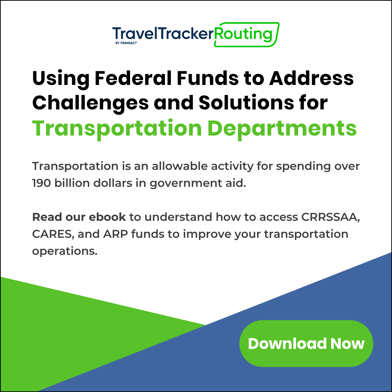What Is ESSER Funding?
ESSER (Elementary and Secondary School Emergency Relief) funding is the portion of funding from the three COVID-19 relief funding laws designated to help address educational issues arising from the pandemic.
There are three Coronavirus relief bills passed by the U.S. Congress that provided significant funding for K-12 education, totaling approximately $190 billion:
|
Legislation Name |
Amount |
Month/Year Passed |
Deadline to Obligate Funds |
Deadline to Liquidate Funds |
|
Coronavirus Aid, Relief & Economic Security (CARES) Act |
$13.2 billion |
March 2020 |
September 30, 2022 |
January 28, 2023 |
|
Coronavirus Response & Relief Supplemental Appropriations |
$54.3 billion |
December 2020 |
September 30, 2023
|
January 28, 2024 |
|
American Rescue Plan |
$122 billion |
March 2021 |
September 30, 2024
|
January 28, 2025 |
* To obligate funds means to commit to spend these funds. It doesn't mean the funds must actually be spent.
* To liquidate funds means to actually spend these funds. What was committed to be spent must actually be spent by this deadline.
The first funding law is called the Coronavirus Aid, Relief, and Economic Security (CARES) Act and it provided $13.5 billion in ESSER I funding. The second funding law is called the Coronavirus Response and Relief Supplemental Appropriations Act and it provided $54 billion in ESSER II funds. The third funding law is the American Rescue Plan, which provided an additional $122 billion in ESSER III funds.
Before we get into the specifics of each relief package, let’s take a moment to review what ESSER funds are and how they were distributed.
ESSER Funds Background
The three COVID-19 relief funding bills were passed over the course of a single year. In March of 2021, the U.S. Congress passed the American Rescue Plan (ARP) Act, providing $122 billion in Elementary and Secondary School Emergency Relief (ESSER) funding.

This funding, coupled with the CARES Act and CRRSA Act ESSER funds brings the total ESSER funding to $190 billion to help education agencies at the state and local level address the educational impacts of the COVID-19 pandemic.
For comparison, Title I funding is about $17.5 billion annually and rising. All totaled, the amount of ESSER funds approved over the span of one year is more than 10 times the amount of funding provided from Title I annually.
ESSER funding comes with a lot of flexibility in how State Education Agencies (SEAs) and Local Education Agencies (LEAs) can spend these funds. However, it is important to remember there are some restrictions on how these funds can be used.
ESSER Funds Restrictions
CARES and CRRSA Funding Restrictions
CARES Act and CRRSA Act ESSER funds include a long list of allowable fund uses, including the catch-all use of “Other activities that are necessary to maintain the operation of and continuity of services in the LEA.”
The one major restriction on how ESSER funds may be used is that there must be a connection between expenditures and preventing, preparing for, or responding to the COVID-19 pandemic.
ARP Funding Restrictions
The ARP Act has some additional restrictions on how the ARP Act ESSER funding must be used. SEAs may reserve up to 10% of the APR Act ESSER funds provided to the state and at least 90% must be granted to LEAs. Of the 10% of SEA ARP Act ESSER funds reserved by the SEA:
- 5% of the total APR Act ESSER funds reserved by the SEA must be used to address learning loss
- 1% to provide summer enrichment programs
- 1% to provide after-school programs
The remaining ARP Act ESSER funds at the SEA level (and all SEA funds reserved under the CARES Act and CRRSA Act) may be used “for emergency needs as determined by the state educational agency to address issues responding to coronavirus”.
There is also a restriction at the LEA level for ARP Act ESSER funding: “LEAs shall reserve not less than 20 percent of such funds to address learning loss through the implementation of evidence-based interventions, such as summer learning or summer enrichment, extended day, comprehensive afterschool programs, or extended school year programs, and ensure that such interventions respond to students’ academic, social, and emotional needs and address the disproportionate impact of the coronavirus on the student subgroups”.
The remaining LEA ARP Act ESSER funding (as well as CARES Act and CRRSA Act ESSER funds) may be used to address issues related to preventing, preparing for, or responding to the COVID-19 pandemic.
ESSER Funding Explained
The question has been asked, “If all this ESSER funding has been provided, why is it taking so long for these funds to become available for districts to spend?”
Typically, the U.S. Government urges states to distribute grant funding to districts as quickly as possible, but there is a process by which these funds can be received. To a degree, how quickly these funds are distributed depends on how nimble and responsive the U.S. government and state governments can be. Delays from the time when grant funding is approved to the time when that grant funding is received in LEAs are inherent in the process that must be followed for Local Education Agencies (LEAs) to obtain these funds. The process typically follows this scenario:
- The U.S. Congress passes a funding bill, which is signed into law by the President.
- For education-related funding, the U.S. Department of Education (USED) must create an application that SEAs must complete to apply for the funds.
- Once SEAs have completed and submitted their applications to the USED, the USED must take those applications through an approval process, requiring changes, if necessary, before funding may be granted to the SEAs.
- SEAs must also develop applications that allow LEAs in their State to apply for these grant funds once the SEA’s application to the USED is approved.
- Once LEAs have completed their applications for funding there is a similar approval process where SEAs must review applications, require changes if necessary, and approve LEA applications for funding.
- It is only after all these steps have been completed that LEAs can gain access to this funding.
SEA applications for CARES Act and the CRRSA Act ESSER funding have been approved for some time and most LEAs should already have access to these funds. The last of the SEA applications for ARP Act ESSER funds were approved in January 2022. LEA applications for ARP Act ESSER funds should all be submitted and most if not all should be approved by now.
SEAs that saw early approval of their ARP ESSER funding applications were able to open, review, and approve LEA ARP ESSER fund applications quicker than those SEAs that received later approvals.
At-Risk Students Targeted in ESSER Funding
Several of the allowable uses of these funds include a description of how the activities funded with these ESSER funds should be used to provide services to specific at-risk groups of students.
While all students are intended to benefit from the provision of ESSER funds, at-risk student groups, whose access to quality educational services may have been exacerbated by the pandemic disruptions, are called out to be targeted by these funds. The list of at-risk student groups includes the following:
- Low-income children or students
- Children with Disabilities
- English Learners
- Racial and ethnic minorities
- Students experiencing homelessness
- Foster care youth
Take a look at this webinar that highlights how HIMSS software helps school districts better serve their most vulnerable students.
One of the allowable uses of ESSER funds included in all three laws summarizes the targeting of at-risk groups the best. It says LEAs are allowed to use ESSER funds for, “Activities to address the unique needs of low-income children or students, children with disabilities, English Learners, racial and ethnic minorities, students experiencing homelessness, and foster care youth, including how outreach and service delivery will meet the needs of each population.”
Districts have a lot of flexibility on how they can use ESSER funds, especially to serve at-risk populations. The fact that districts can use ESSER funds for any purchase to address issues that are related to preventing, preparing for, or responding to the COVID-19 pandemic means that districts can use these funds to purchase products from the TransACT product family, including:
- ParentNotices
- AfterSchool21
- TravelTracker-Routing
- FacilityTracker
- Homeless Information Management System for Students (HIMSS)
Frequently Asked Questions About ESSER Funds
What Is ESSER Funding?
ESSER funding is the portion of funding in the three COVID-19 relief laws designated to help address educational issues arising from the pandemic. These three Coronavirus relief laws have provided approximately $190 billion in ESSER funding to states and districts.
How Can My District Use ESSER Funds?
Districts have a lot of flexibility on how they can use ESSER funds. Because Districts can use ESSER funds for expenditures related to preventing, preparing for, or responding to the COVID-19 pandemic, they can use ESSER funds to purchase products from the TransACT product family. In an on-demand webinar, TransACT Parent Notice’s Executive Director for Federal Programs and State Relationships, Dr. David Holbrook, outlines the required and allowable uses of these funds and the specific programs and activities allowable for using ESSER funds.
Is There an Expiration Date on ESSER Funds?
ESSER funds are one-time funds, which means that when these funds run out, they will not be replaced or provided annually like Title I funds. ESSER funds that are not spent by the liquidation date typically must be returned to the U.S. Department of Education (USED) unless an extension of the liquidation period has been granted. USED is allowing States and Districts to apply for an extension of the liquidation period for 'extenuating circumstances'. States and districts must spend these funds by:
- CARES Act ESSER funds expire on September 30, 2022, with a liquidation date of January 28, 2023.
- CRRSA Act ESSER funds expire on September 30, 2023, with a liquidation date of January 28, 2024.
- ARP Act ESSER funds expire on September 30, 2024, with a liquidation date of January 28, 2025.
For more information about extending the liquidation period for ESSER funds, check out the EdWeek article on how "schools can seek more time to spend ESSER funds on outside contracts" and the USED guidance, questions E-3b-E-3d.
Are There Any ESSER Funds Restrictions?
The one major restriction on how ESSER funds may be used is that are related to preventing, preparing for, or responding to the COVID-19 pandemic.
The ESSER funding laws include long lists of allowable uses of these funds, including the catch-all use of “Other activities that are necessary to maintain the operation of and continuity of services in the LEA.” Only the ARP Act requires that a portion of the funds be spent on specific activities (20% of LEA funds must be spent to address learning loss, academic enrichment, and afterschool programs). With that, districts have a lot of flexibility on how they can use ESSER funds.
Learn More About ESSER Funds
Check out the Using Federal Funds to Address Challenges and Solutions for Transportation Departments ebook that details federal funding usage for Transportation Departments under ESSER, or contact a team member to learn more about how these products can serve real needs in your district today.
For those that are interested, we also have a webinar that highlights how our software helps school districts remain legally compliant with the law with an ESSER-eligible product.




